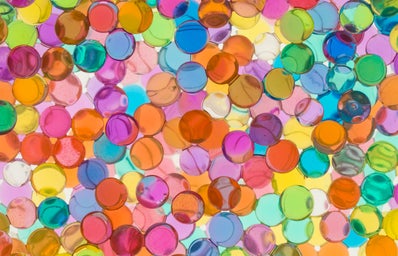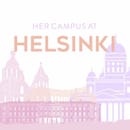If you go to a museum – any museum – there is a lot that you as a visitor won’t notice or even have access to. The University of Helsinki has a museum of its own which also has extensive projects going on besides its function as a visitor centre. Museum Director Sten Björkman tells us about what goes on behind-the-scenes of the Helsinki University Museum.
This is the second part of our 2-part mini-series on the Helsinki University Museum. The first part tells about the museum’s exhibition and collections.
Caring for Heritage
What guests see in the exhibitions is only a small part of all the tasks a museum is in charge of.
“What you can see here in the exhibitions is only a small part of the machinery that runs the museum,” Björkman reveals. “Our exhibitions and the museum objects around the university or elsewhere make up only 1% of our total collections. The Finnish Museum of Natural History, LUOMUS, displays only 0.2‰ of its collection!”
It’s a matter of semantics. The word museum can refer both to the exhibition and the museum-organisation that is in charge of the exhibition and all the collections. “People usually think of museum only as the exhibition, but it’s our work with the collections that is the starting point. We are responsible for the material cultural-historical heritage. This includes art research, art collections, individual items as well as furniture,” Björkman explains.
It turns out that not all museum-worthy items are hidden away in exhibition glass cases or collection archives. Historical objects are quite common in the corridors of the university buildings, paintings, statues and more.
“Usually when an item becomes a museum object, only restorers are allowed to touch it. Yet the University of Helsinki has actually quite a few museum objects still in daily use. A good example is the 17th century lectern in Assembly Hall of the main building. Sometimes when there’s an event in the Assembly Hall and I’m there as a guest, I see to my horror someone placing their wineglass on the lectern… On the other hand, using these objects is part of the university’s cultural history and traditions; we should use them and we do, I don’t see any problem with that.”
According to Björkman, the need to have an organisation taking care of the university’s collections was the very reason the museum was founded in 1978. “As professions during this time were becoming more and more specialised, there were no longer faculty members or staff who would have been able to care for these old collections. The items we have are valuable as part of the history of science in Finland; we can’t afford to lose them.”
Responsibilities of the museum include, for example, finding locations for the collections. “About a third of our collections are currently stored in an appropriate location. Most of the remaining are mostly stored in locations that are acceptable, but do not fill the requirements. But there are some real headaches…”
Björkman recounts how a collection of agriculture from the 18th and 19th centuries housed in an old building was recently almost ruined. The roots of a nearby tree had grown into the sewer under the museum building and caused a leak. But the clean-up had not been made thoroughly enough, creating the ideal conditions for mould growth. When the museum authorities made their monthly examination, the whole building had been taken over. Luckily most of the collection was saved after an arduous operation of manually killing the spores from every single museum artefact, a few thousand items. There is a lesson to be learnt from this: “Museums should be hermetically closed spaces, no pipes or plumbing running under the floor or above the ceiling.” The museum hopes that it will be able to provide suitable environments for all of its collections.
Another big behind-the-scenes responsibility is to catalogue and digitalize collections and put them online. “Not everything can be put online, of course, because of legislation on sensitive information, but the idea is that both researchers and the general public can access the content,” Björkman says. “This is a never-ending project. But upholding the national history is also a never-ending project!” he laughs. “The idea behind it is to be preserved until the end of the world; maybe in a 1000 years we’ll see how we succeeded… even museums were invented only a few hundred years ago.”
Publicity Planning
Behind-the-scenes responsibilities are not limited to collection work. You need someone to plan all the exhibitions, events and other ways to get publicity. The museum has two main exhibitions: the historical exhibition in the main building museum and the exhibition in the Helsinki Observatory. The exhibition in the main building had its grand opening in 2015, on the day that marked 375 years since the founding of the university. This was only a few months before the budget cuts by the government. As a consequence, the university had to make huge changes and the museum had to slow down.
“We had planned on getting the faculties more involved and get every freshman to visit this museum. It would have been part of the orienting studies, to get to know the place you have come to study,” Björkman tells of the vision. “Because of the budget cuts on the university in 2015, our opening-hours and number of temporary exhibitions have had to be limited. We do not have the resources for as many projects,” he admits.
The museum hosts both exhibitions and events. For example, the Observatory gets many visitors on Helsinki Day, The Night of the Arts, Researchers’ Night, and the Night of the Museums that is coming up for the first time in 2017. Björkman tells of the many events the museum organizes: “We also have some speciality program such as lectures. We try to make them as interesting as possible and the small lecture room at the Observatory always fills up. The target audience of the Observatory are school children. We’re also trying to get more visitors to the main building with guided tours and by partnering with student organisations. The museum has also taken part in welcome fairs for foreign students, and quite a few of them have actually visited us.”
Future Plans?
The museum still has something in store for the next year. “The Observatory currently has a temporary exhibition on electricity that will go on until autumn 2017. When the university’s new Think Corner opens in 2017, we will have a small temporary exhibition on maternity packages,” Björkman says. Why maternity packages? “Maternity packages have achieved tremendous results in society. In the beginning of the 20th century Finland was a developing country in this aspect, but today it’s one of the best. I think this is a good example of how determination can bring about results without it having to be very expensive.”
The Helsinki University Museum is located on the 2nd floor of the University Main Building’s New Side (Fabianinkatu 33). Opening hours are Tue-Thu 12-17, Fri 12-16. More information for visitors can be found on the museum’s webpage.
All photos © by Maija Huitu



